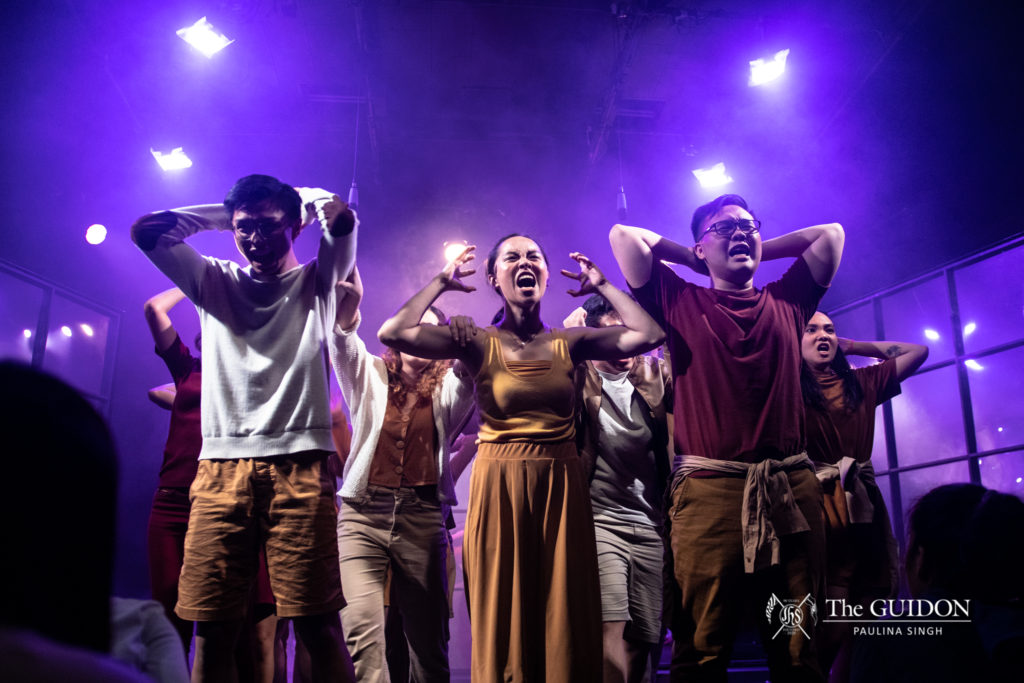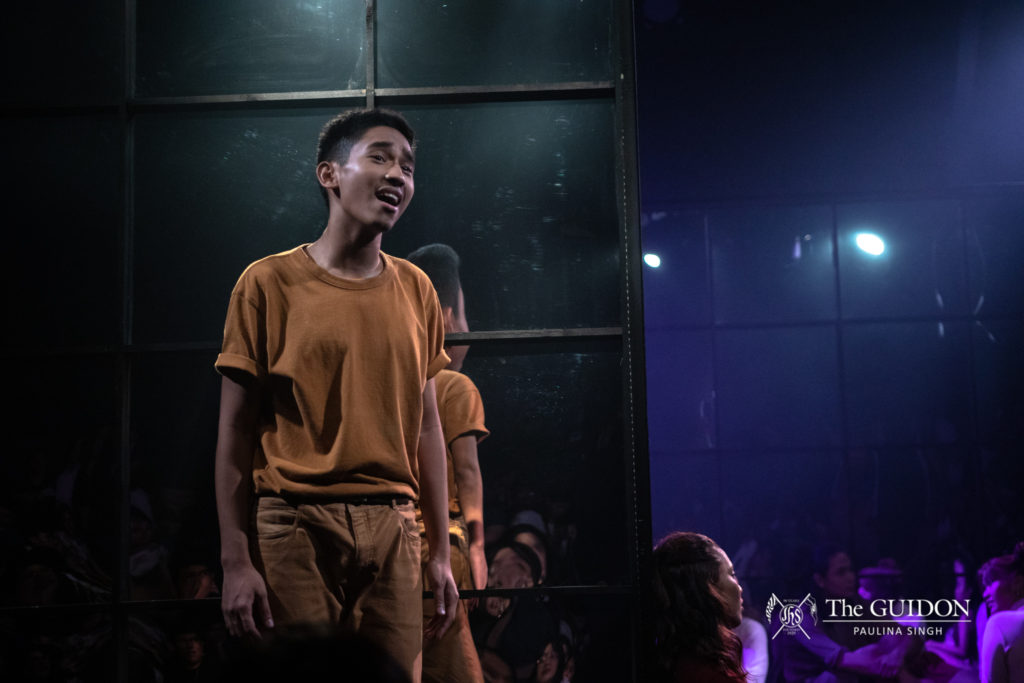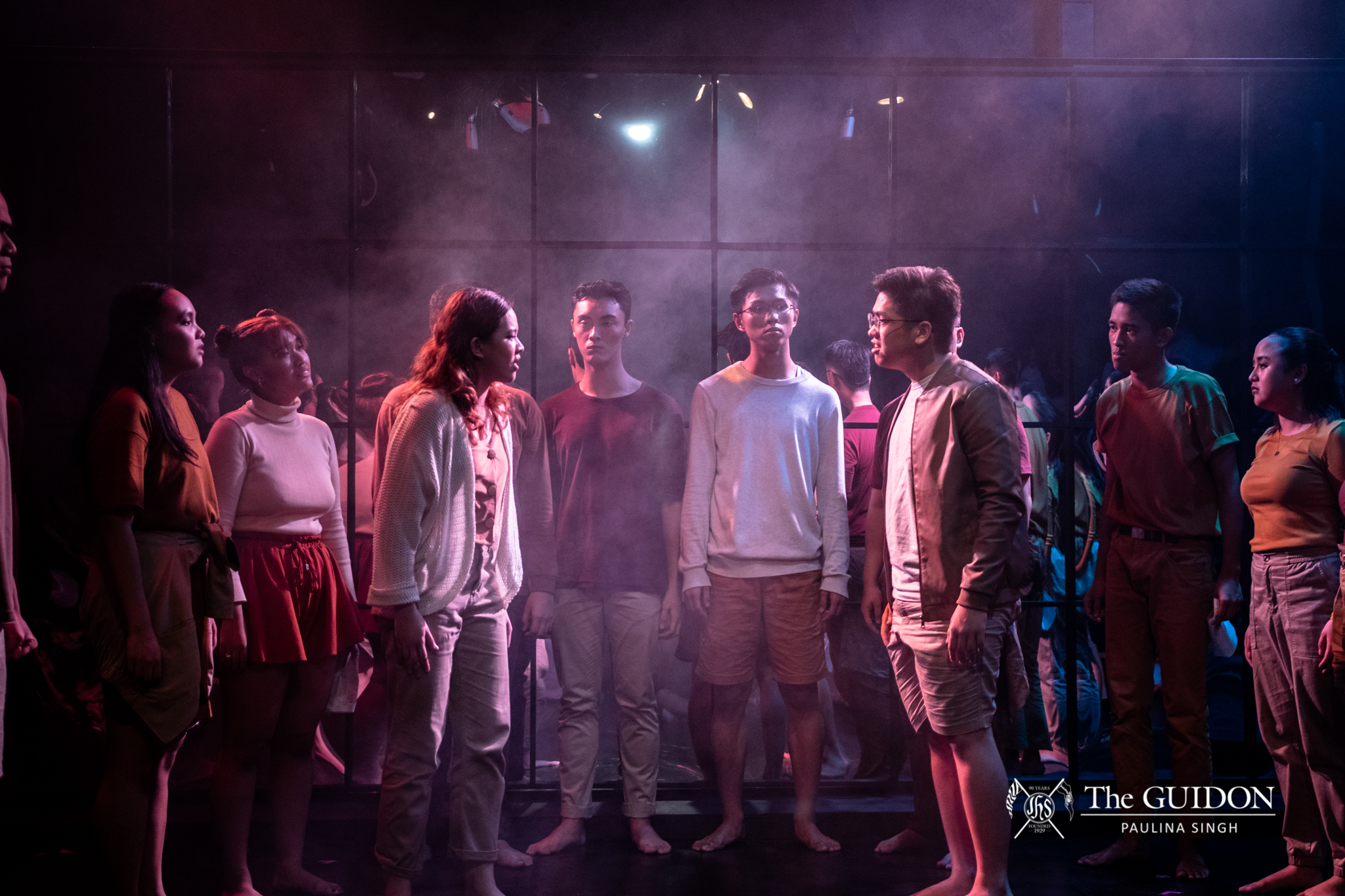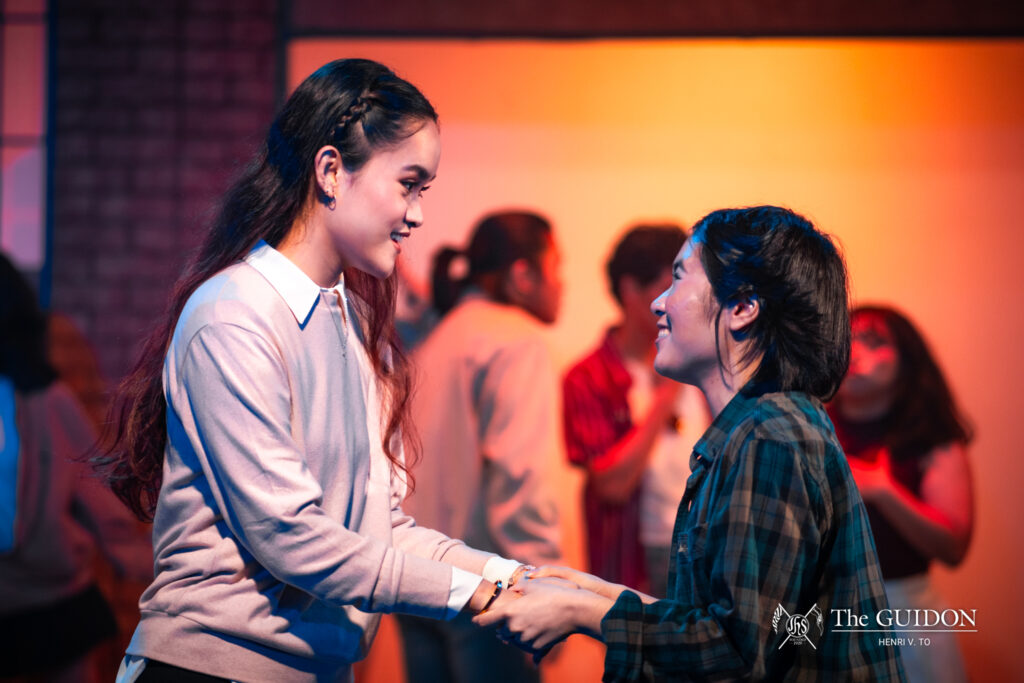“A is walking at a rate of three miles per hour and B is walking at a rate of two miles per hour. Their paths do not intersect. Nonetheless, does B change A’s trajectory?”
A physics exam questionnaire propels The Theory of Relativity’s story about college students into a medley of songs and monologues on their everyday trials and tribulations. These are experiences that undoubtedly ring true for many in the audience. Directed by Andrei Nikolai Pamintuan with musical direction by Abi Sulit, Ateneo Blue Repertory’s (blueREP) adaptation of Brian Hill and Neil Bartram’s musical explores human interconnectivity through its colorful characters, who embody the sometimes-too-troublesome experience of being human in the now.
The Theory of Relativity plays out more like an album than what you might expect from a theater production. As a song cycle musical, the show largely consists of individual performances. Almost every section is a different story for a new character or a familiar story told from a different perspective, broken up only by a handful of songs and the cast’s eventual coming together. Each section tells a tale that contrasts and parallels the others: From the largely trivial collisions in transit to deeply personal and extremely powerful choices of love.

Photo by Paulina Singh
An undeniable charm marks each performance in the musical. The characters may take their motifs from physics, but they have some serious chemistry. For instance, total opposites Jenny (Nikole Lim) and Sara (Julia Santiago) bring life to a lost childhood friendship in “The End of the Line.” Here, Lim and Santiago’s fantastic musical coordination and stunning vocals demand attention.
The adorable bond between Oliver (Choy Simpao) and Mike (Tristan Ahorro) also makes “Apples and Oranges” sufficiently warm and fuzzy. And despite appearing solo in separate scenes, Paul (JP Lapuz) and Julie’s (Mar Argente) quirky fairytale relationship feels natural. It’s easy to imagine them side by side, though they never speak to each other on stage. Lapuz starts the solos strong with purposeful awkwardness, capturing the character’s nerves through a combination of shifts in vocal tone and pleading gestures.
In any case, movement director Ricardo Magno’s earthy, connected choreography provides the backdrop to a number of song pieces. The choreography has a very human feel to it, with characters often in physical contact. To sum it up, there’s no shortage of show-stopping numbers here.

Photo by Paulina Singh
All this takes place in an enclosed space, placing the cast within close distance of the front-row audience. Actors take the opportunity to occasionally get up close to their viewers and play up the intimate atmosphere. The set and lighting, designed by Jodinand Aguillon and Miyo Sta. Maria respectively, forgo the backdrop of a college classroom in favor of distorted mirrors as walls. Admittedly, this construction might come off a little heavy-handed in its attempt to “reflect” the audience onto the stage and into the story. Yet, the set is used strategically, for example, in serving as a mirror for fixing makeup or providing introspective imagery.
The Theory of Relativity starts off lighthearted, but like many of its individual performances, its trajectory later touches on more serious subjects—tracing relationships from the fleetingly inconsequential to the highly significant. Here, blueREP brings out the best in the youth’s shared experiences—and finally presents them on a collision course with wit, humor, and loads of charm.
Editors’ Note: An earlier version of this article neglected to mention Musical Director Abi Sulit, Set Designer Jodinand Aguillon, and Lighting Designer Miyo Sta. Maria even though their work was highlighted throughout the review. We apologize for the oversight.






